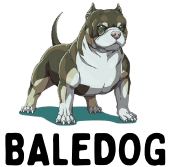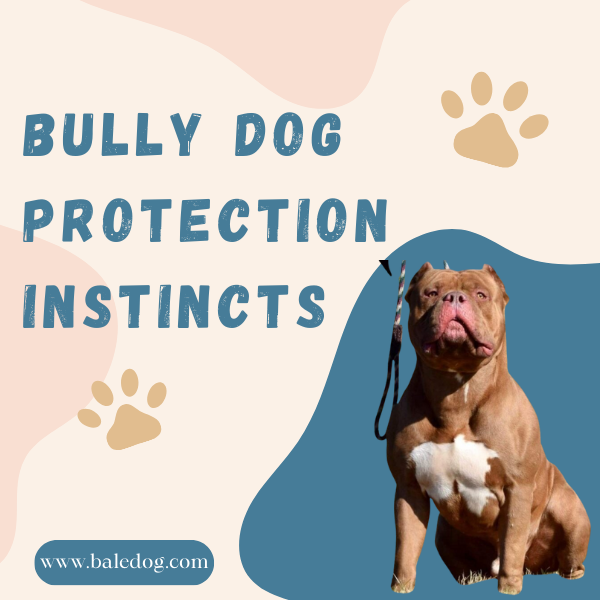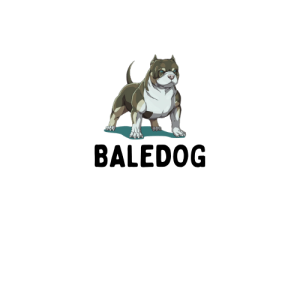When people think about bully dogs, many envision strong, muscular dogs that have a no-nonsense attitude and look like they could take on just about anything. But beyond their tough exterior, these dogs are often incredibly loving, loyal, and protective. Their protection instincts are one of the most defining aspects of their personality, and understanding this trait can help you foster a deeper bond with your dog while also ensuring you’re creating a safe environment for both you and your pet.
Bully dogs, especially breeds like the American Bully, Pitbull, and other bully mixes, have been bred with a unique combination of traits. While many of these dogs were originally bred for tasks like guarding, hunting, and even fighting, today’s bully dogs are often more focused on being loving family companions with a strong instinct to protect their loved ones. This article will dive into the nature of a bully dog’s protection instincts, why they have them, and how to manage these instincts for a harmonious relationship with your pet.
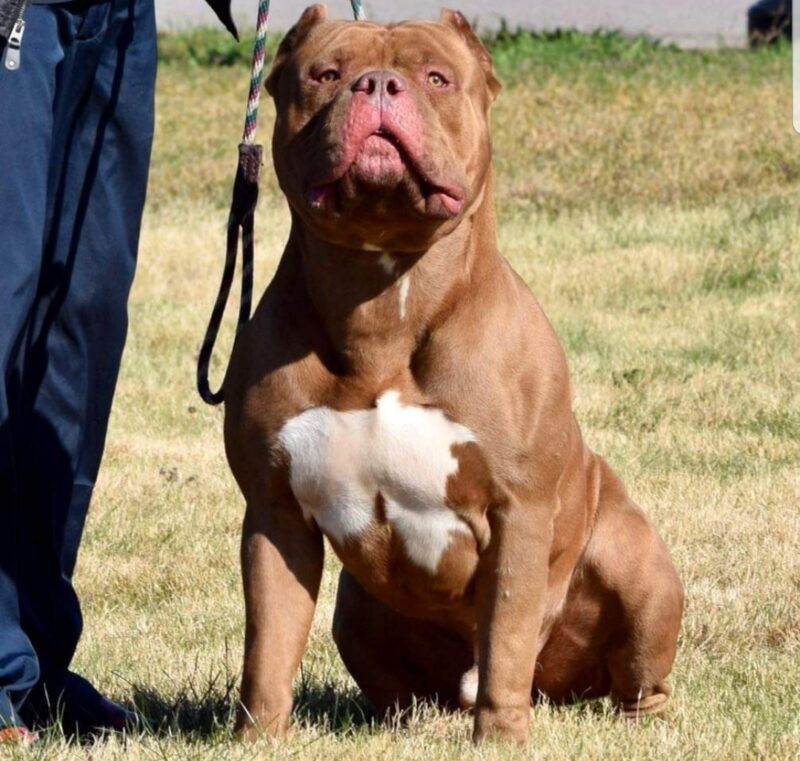
The Protective Instinct: A Natural Trait
All dogs, regardless of their breed, have an instinct to protect their pack. This is often tied to their survival instincts. But when it comes to bully dogs, these instincts are particularly pronounced. Historically, these dogs were bred to be guardians, protectors, and even working dogs, which naturally reinforced their protective behavior.
Bully dogs have a natural desire to protect their families from any perceived threat. Whether it’s an intruder, another animal, or even a situation they sense is unsafe, bully dogs are quick to step up. This is why they often have a reputation for being fiercely protective of their homes and the people they love.
But before we dive too deep into their protective nature, it’s important to clarify that protection doesn’t always mean aggression. While some bully dogs may exhibit more dominant or assertive behavior, their protection instinct is often more about alerting their owners to potential danger or acting as a deterrent. It’s usually not about going on the offensive unless the situation really calls for it.
Why Do Bully Dogs Have Such Strong Protection Instincts?
So, why do bully dogs have such a strong sense of protection? It goes back to their genetics. The modern American Bully, for example, was developed by mixing different types of Bulldogs and terriers. Bulldogs, in particular, were historically bred to be strong, resilient dogs that could guard properties and protect livestock. These dogs were also bred for their fearlessness and ability to stand up to potential threats.
As the American Bully evolved, it retained much of its ancestor’s protective traits. Similarly, the Pitbull, another popular bully breed, was bred for strength, courage, and the ability to protect its family or home. As a result, many bully dogs still carry these traits today, even if they are now primarily kept as companion animals.
While the instinct to protect their loved ones is deeply rooted in their DNA, bully dogs are also highly sensitive to their environment and emotions. They are often incredibly in tune with their owners’ feelings and can pick up on subtle changes in body language or tone of voice. This heightened sensitivity can trigger a protective response when they sense something is off.
Signs That Your Bully Dog is Protective
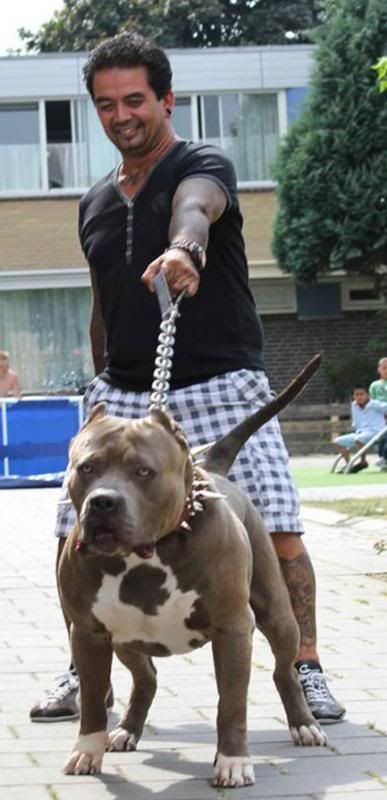
If you’re new to owning a bully dog or just starting to notice your dog’s protective behavior, it can sometimes be a bit overwhelming. Here are some common signs that your bully dog is feeling protective:
- Alertness: One of the first signs of protection behavior is alertness. Your bully dog might become more vigilant, watching and listening to their surroundings closely. This is especially true if a stranger or unfamiliar noise approaches your home.
- Increased Barking: If your dog starts barking at the door, the window, or even when someone enters the room, it’s a sign that they are marking the area as their territory and signaling a potential threat.
- Guarding Behavior: Bully dogs are known to be territorial, and they might exhibit guarding behavior, whether it’s around food, toys, or their human family members. This isn’t necessarily aggressive, but more about asserting their space.
- Body Language: A protective bully dog might stand tall, stiffen up, or adopt a “watchdog” stance. You might notice them pacing or positioning themselves between you and any perceived threat.
- Growling or Snarling: If a bully dog feels particularly threatened or protective, it might growl or snarl. This is a warning sign, not necessarily an indication that the dog will attack, but it’s a clear signal that the dog is on alert.
- Physical Blocking: Some bully dogs might position themselves in front of you or your family members when they sense a threat. They’re essentially acting as a physical barrier to protect you from potential danger.
- Possessiveness: Another sign of protection is possessiveness. If your bully dog seems particularly attached to certain family members or objects, they may see it as their duty to “guard” those things.
How to Manage and Encourage Healthy Protective Instincts
While it’s great to have a protective dog, there’s a fine line between healthy protection and over-protection. You don’t want your bully dog to become overly possessive, aggressive, or territorial. The key to fostering a healthy balance is training, socialization, and understanding your dog’s cues.
1. Training Your Bully Dog
Training is crucial for any dog, but it’s especially important when you have a breed with strong protection instincts. You want to teach your dog the difference between a real threat and harmless situations. Basic obedience training like “sit,” “stay,” and “leave it” can help keep your dog calm and focused.
A protective bully dog might overreact to new people or unfamiliar situations, but with proper training, you can teach them to remain calm and assess situations rationally. Teaching your dog commands that control their behavior in these moments can be a life-saver.
2. Socialization
Early socialization is key in ensuring that your bully dog doesn’t become overly suspicious or aggressive toward strangers. Introducing your dog to various environments, people, and other animals at an early age helps them understand that not everything and everyone is a threat. Socialization should be an ongoing process throughout their life to keep them well-rounded and balanced.
When you expose your dog to different scenarios, positive reinforcement should be used to reward calm and polite behavior. For example, if a new person comes into your home, reward your dog for staying calm and not barking or becoming overly protective.
3. Understanding Your Dog’s Body Language
A big part of managing your dog’s protective instincts is understanding when they’re feeling threatened or stressed. If your dog is showing signs of being uncomfortable, such as growling, raising their hackles, or becoming fixated on something, take the time to assess the situation. Are they just being alert, or is there a legitimate concern?
By being more aware of their body language, you can help prevent situations from escalating and step in before your dog feels the need to act on their instincts.
4. Providing a Safe Space
Bully dogs, like many other breeds, need a safe space where they can retreat if they feel overwhelmed or stressed. This could be their bed, crate, or a quiet area in your home where they can relax. A protective dog might be more on edge if they don’t have a place to unwind when things get hectic. Make sure your dog has a comfortable spot where they can feel secure.
Addressing Over-Protectiveness in Bully Dogs
While bully dogs are naturally protective, there can be instances where their instincts go into overdrive. Over-protectiveness can lead to anxiety, aggression, or possessiveness, which can make everyday life a bit more challenging. It’s important to recognize these behaviors early and address them appropriately so that your dog remains well-balanced.
1. Over-Protection of Territory
Bully dogs, especially those with strong guarding instincts, can sometimes become overly protective of their territory. Whether it’s your home, yard, or even a favorite spot in the house, a bully dog might become territorial to the point of feeling the need to defend it from any perceived intruders—even family members or guests.
To manage this, it’s important to teach your dog that not every new person or change in their environment is a threat. One way to address this is by inviting friends, family, and guests into your home frequently, in a calm and controlled manner. When your dog sees that new people are not a danger, they will learn to relax and accept visitors without becoming overly protective.
If your dog begins showing signs of aggression toward visitors, try using positive reinforcement. Reward calm behavior with treats, praise, or playtime. Never punish a dog for protective behavior, as this can lead to confusion or fear. Instead, focus on rewarding the positive behavior you want to see more of.
2. Resource Guarding
Resource guarding is another issue that can arise when a dog feels protective over certain items, such as food, toys, or even their human family members. Bully dogs, especially those with heightened protective instincts, might become possessive of these resources and growl, snap, or act aggressively when someone tries to approach them or take the item.
To manage this behavior, it’s crucial to teach your dog that sharing is a good thing. Start by desensitizing them to the presence of people near their food or toys. Begin by sitting next to them while they’re eating, and occasionally offer them a tasty treat or a pat when they remain calm. Gradually, they’ll learn that people coming near their resources is a positive experience rather than a threat.
If your bully dog’s resource guarding becomes more serious, it might be a good idea to consult a professional dog trainer or behaviorist. They can help you implement specific techniques to reduce the guarding behavior in a safe and controlled manner.
3. Stranger Anxiety and Fear-Based Aggression
While many bully dogs are naturally protective, it’s also possible for them to become overly fearful of strangers or new situations. This can result in fear-based aggression, where a dog reacts aggressively simply because they feel threatened or nervous.
If your bully dog shows signs of fear or anxiety around strangers, it’s important to address this behavior with gradual exposure. Start by introducing them to unfamiliar people in a calm, controlled environment. Allow your dog to observe the new person from a distance and reward them for calm behavior. Over time, this exposure will help your dog become more comfortable around new people and reduce their anxiety.
In some cases, a bully dog may require additional behavioral training or desensitization techniques. If fear-based aggression persists, working with a professional trainer who specializes in aggression issues is highly recommended.
The Role of Socialization in Managing Protection Instincts
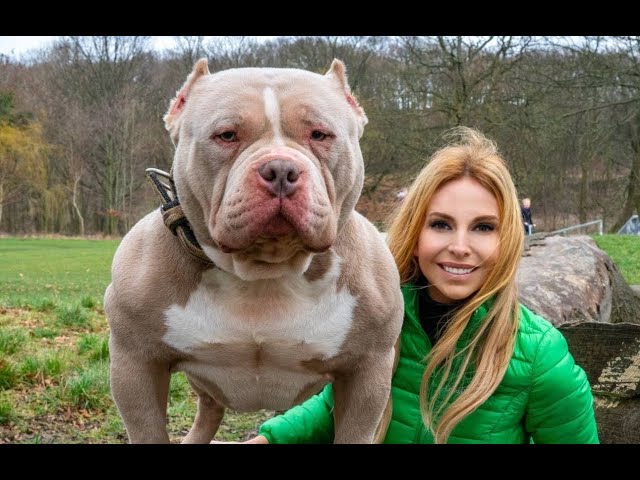
Socialization plays a crucial role in helping bully dogs develop into well-rounded, confident pets. When bully dogs are properly socialized, they are less likely to become overly protective or aggressive toward unfamiliar people or situations.
Early Socialization
The earlier you begin socializing your bully dog, the better. Puppies are like sponges—they absorb new experiences quickly and learn to adjust to different people, animals, and environments. Positive experiences during the critical early months of a puppy’s life can go a long way in shaping their adult behavior.
For bully dog puppies, socialization should include:
- Meeting a variety of people, including children, adults, and people of different ethnicities and appearances.
- Exposure to other dogs, animals, and pets in a controlled environment.
- Visits to various places like parks, pet stores, and busy streets to expose them to new sounds, smells, and sights.
- Introducing them to a variety of situations, such as different types of transportation or household noises, to prevent them from becoming startled or fearful later on.
The goal is to create positive associations with new experiences and help your dog understand that the world is full of people, places, and situations that are not threats.
Continued Socialization
Even after the early socialization period, continued exposure to new experiences and interactions is crucial for bully dogs. Dogs that are not regularly socialized can develop territorial or fearful behaviors, which can intensify their protective instincts.
Take your bully dog on regular outings where they can interact with other dogs and people. Keep these interactions positive and encourage your dog to stay calm and relaxed. Over time, your dog will learn to differentiate between harmless situations and real threats, reducing their need to act protectively inappropriately.
Building a Strong Relationship with Your Bully Dog
At the heart of managing your bully dog’s protective instincts is building a strong, trusting relationship with them. Bully dogs are incredibly loyal and often form deep bonds with their owners. When your dog trusts you and understands your leadership, they will be more likely to follow your guidance when it comes to handling protective situations.
1. Establish Leadership
While bully dogs are protective, they also need a clear leader to guide them. Establishing yourself as the pack leader doesn’t mean being harsh or dominant—it simply means providing structure, consistency, and clear boundaries for your dog.
Use positive reinforcement techniques like treats, praise, and play to reward your dog for good behavior. Consistent training and routines will help your dog feel secure in their role in your household, and they will be more likely to follow your cues when it’s time to calm down or relax in a potentially stressful situation.
2. Positive Reinforcement
Positive reinforcement is key when managing your dog’s protective instincts. Reward calm behavior and correct inappropriate behavior in a gentle manner. For example, if your dog remains calm when a guest enters your home, reward them with a treat or a toy. If they become overly protective or aggressive, redirect their attention to a more positive behavior, such as sitting calmly, and reward them when they comply.
Positive reinforcement helps to strengthen the bond between you and your dog, making them more likely to trust you and respond to your guidance.
3. Give Your Dog Enough Exercise
Bully dogs are energetic and need plenty of physical and mental stimulation to stay happy and healthy. A well-exercised dog is less likely to become anxious or overly protective. Make sure to provide your dog with daily exercise—whether it’s a long walk, playtime in the yard, or a fun training session.
Exercising your bully dog also gives them an outlet to release any pent-up energy, which can prevent excessive protective behavior or other behavioral problems. Regular physical activity will help keep your dog balanced and reduce the likelihood of them acting out due to boredom or frustration.
Conclusion
Bully dogs are incredibly loyal, protective companions who will go to great lengths to ensure the safety of their families. Their protection instincts are deeply ingrained, but with the right training, socialization, and management, these instincts can be channeled into healthy, positive behaviors.
By understanding the nature of your bully dog’s protective instincts, fostering a trusting relationship, and providing consistent training, you can ensure that your dog’s protective nature enhances their role as a loving family member rather than becoming a source of tension or anxiety. With the right approach, your bully dog can be a true guardian of your home and a steadfast, affectionate companion who always has your back.
Bully dogs are often seen as strong, tough protectors, and it’s true that they have a strong instinct to guard their homes and families. This protective behavior is part of what makes them such loyal companions. However, it’s important to recognize that, with proper training and socialization, these instincts can be channeled in healthy ways. Understanding your dog’s protective nature, respecting their boundaries, and fostering calm, controlled environments will help ensure that both you and your bully dog enjoy a harmonious life together.
So, while your bully dog may be the first to jump up and alert you to danger, they can also be the first to curl up beside you and show you the unconditional love and loyalty that makes them such a fantastic companion.
